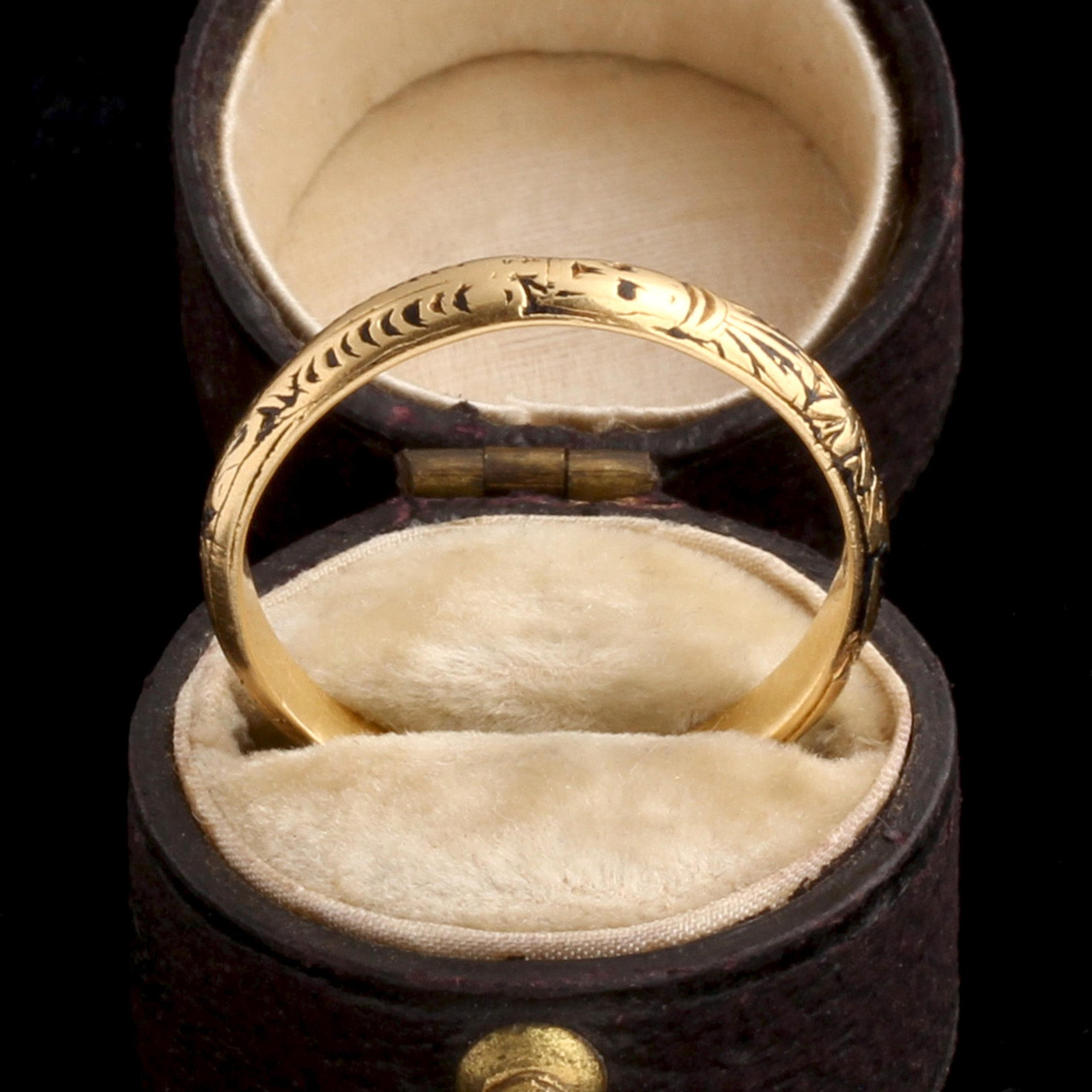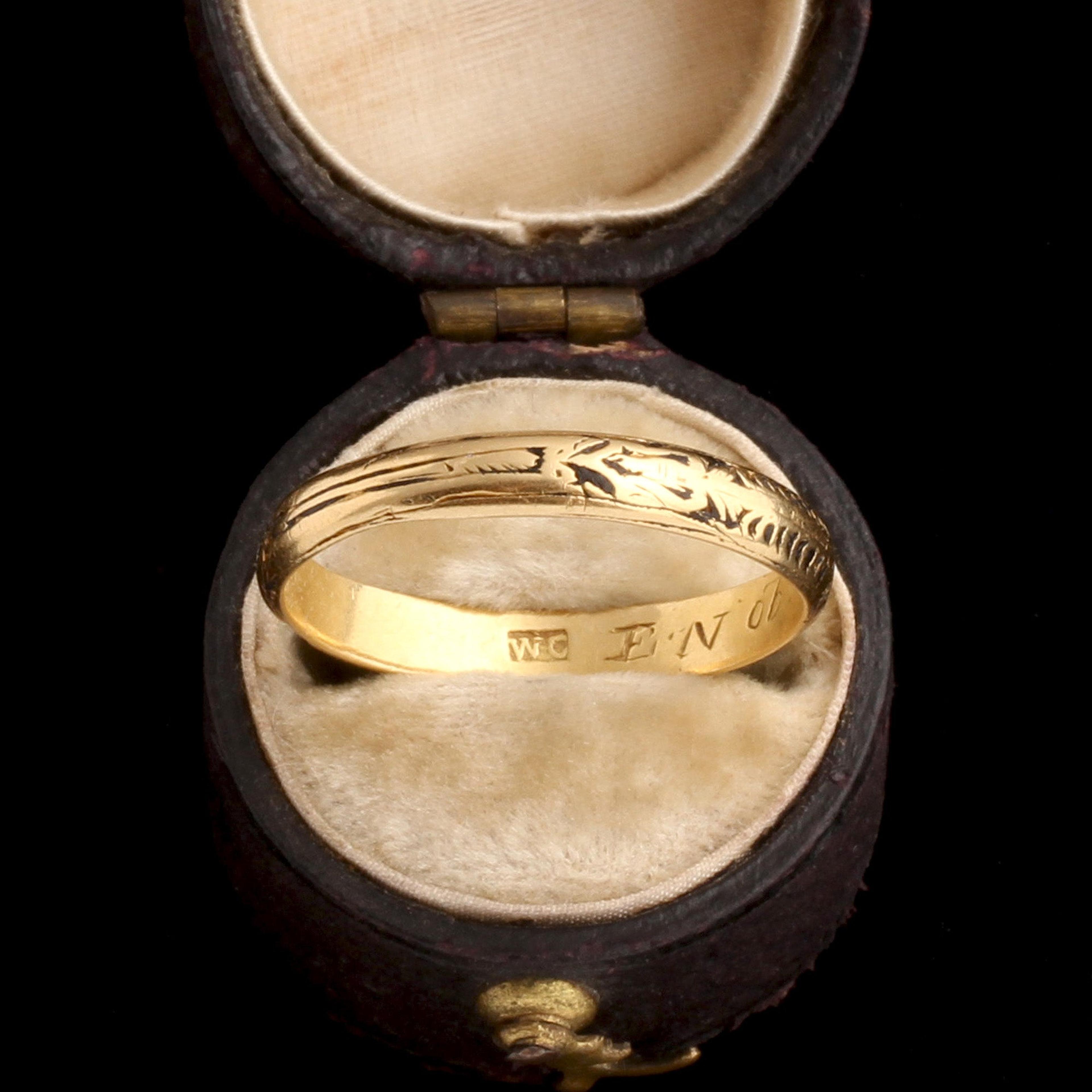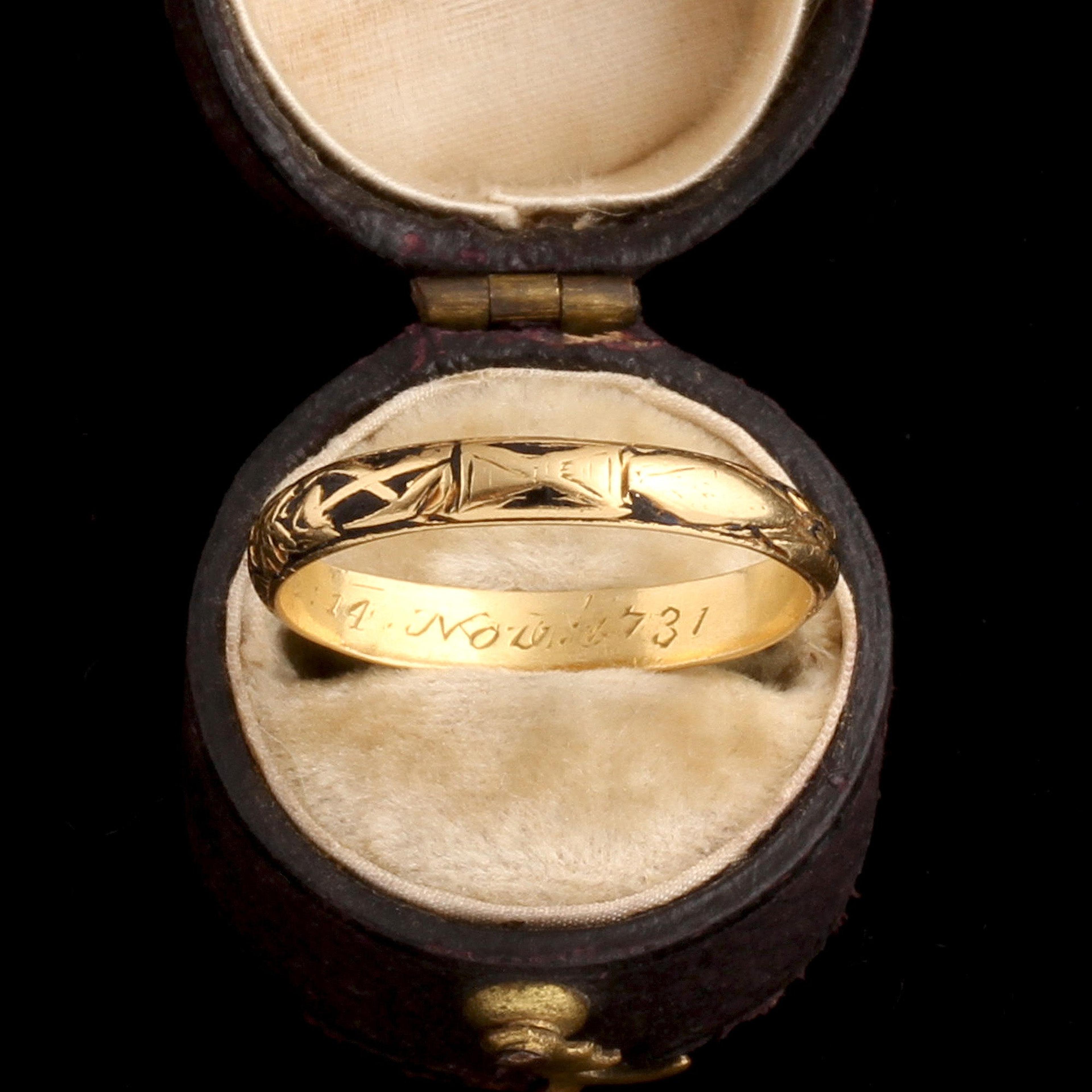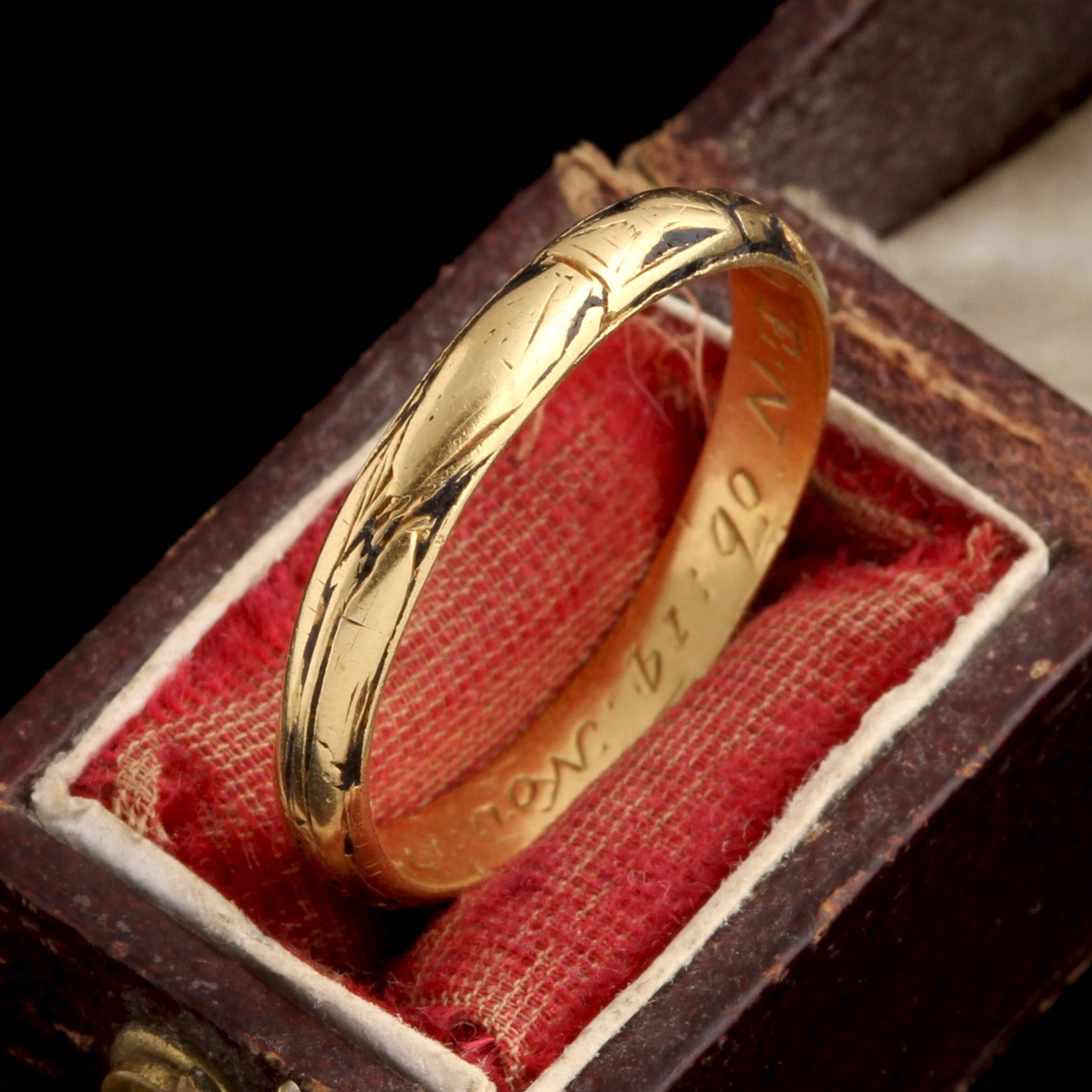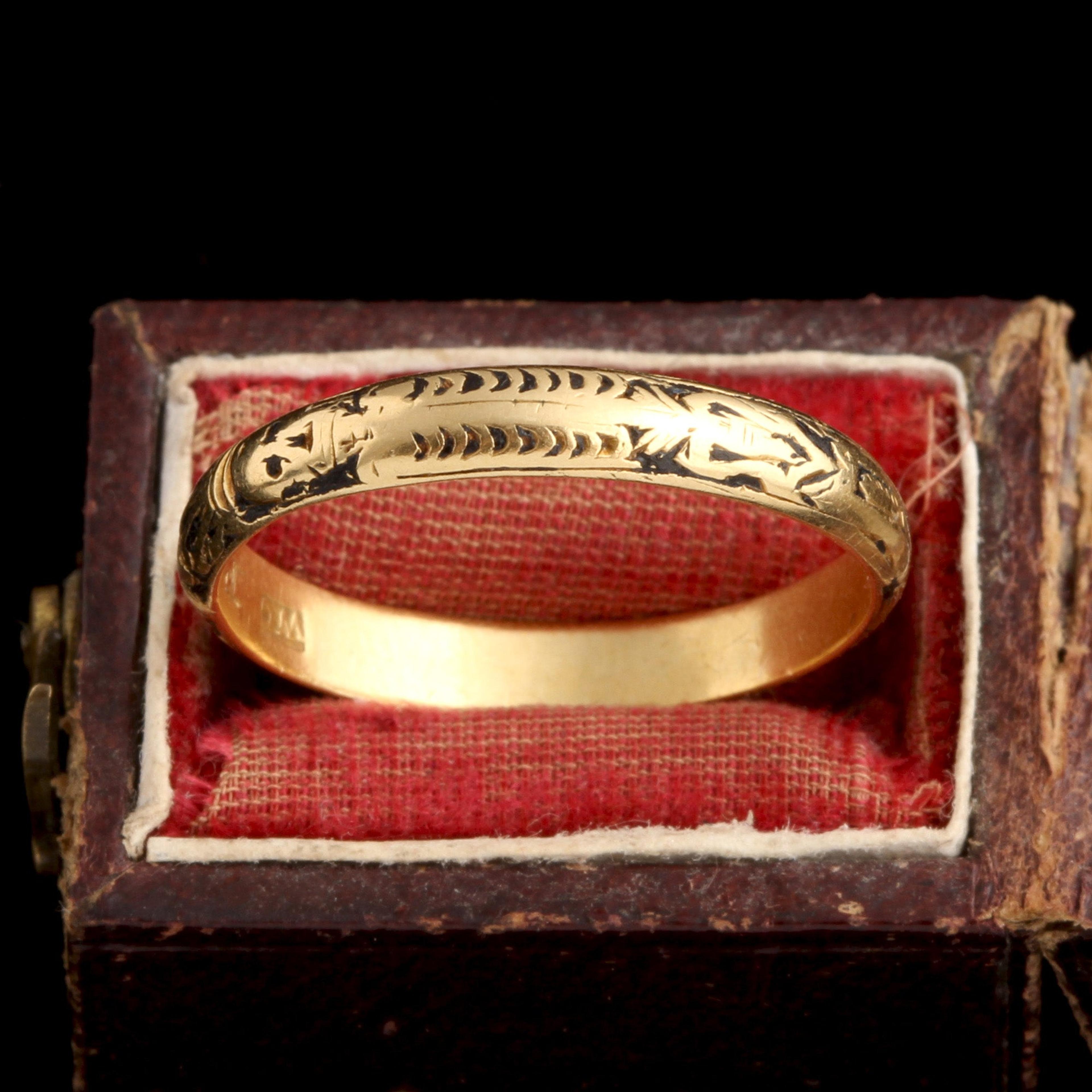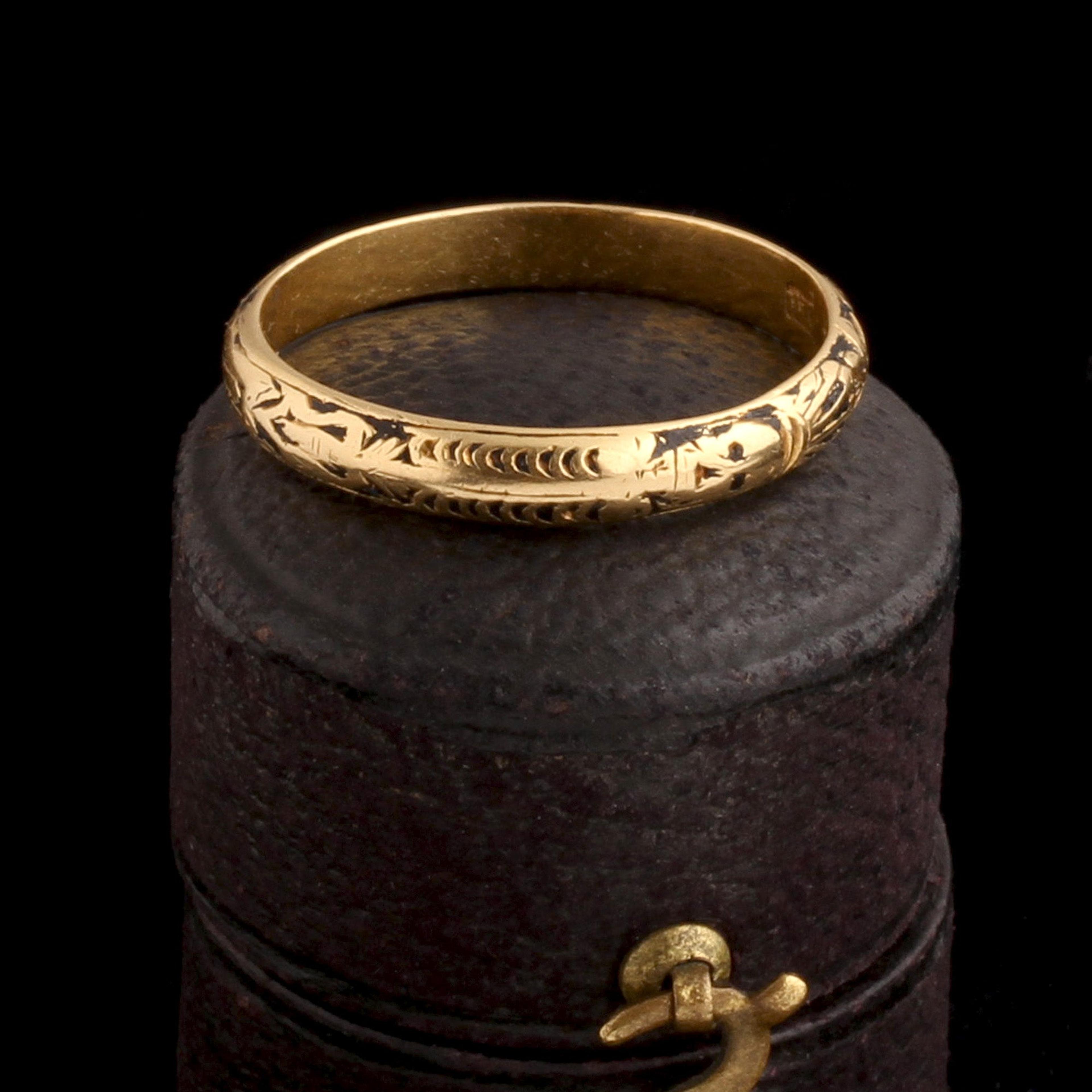These extremely rare bands are called "skeletals" - the first example dates from 1659 and this one was made not long after in 1731. A full skeleton and other death-themed emblems are meant to drive home the brevity of life. An hourglass is symbolic of time passing, and a crown on the skeleton's head reminds us that death is the ruler of us all. A coffin and gravedigger's tools are other poignant memento mori symbols that we recognize from tombstones and paintings from the era. There's significant loss to the enamel, which we actually like, because it means that you can truly wear this ring. A perfect example with intact enamel would be unwearable without great care. A similar one (in pristine condition) has been deaccessioned by the Museum of London and is available from the venerable Symbolic & Chase; another example can be found in the British Museum.
thedetails
- Materials
22k gold (tests), black enamel
- Age
dedicated in 1731
- Condition
Good - a fair amount of loss to the enamel but still mostly intact; surface wear but all details are still present
- Size
8.75, cannot be resized; 3.9mm shank
Need more photos?
Send us an email to request photos of this piece on a model.
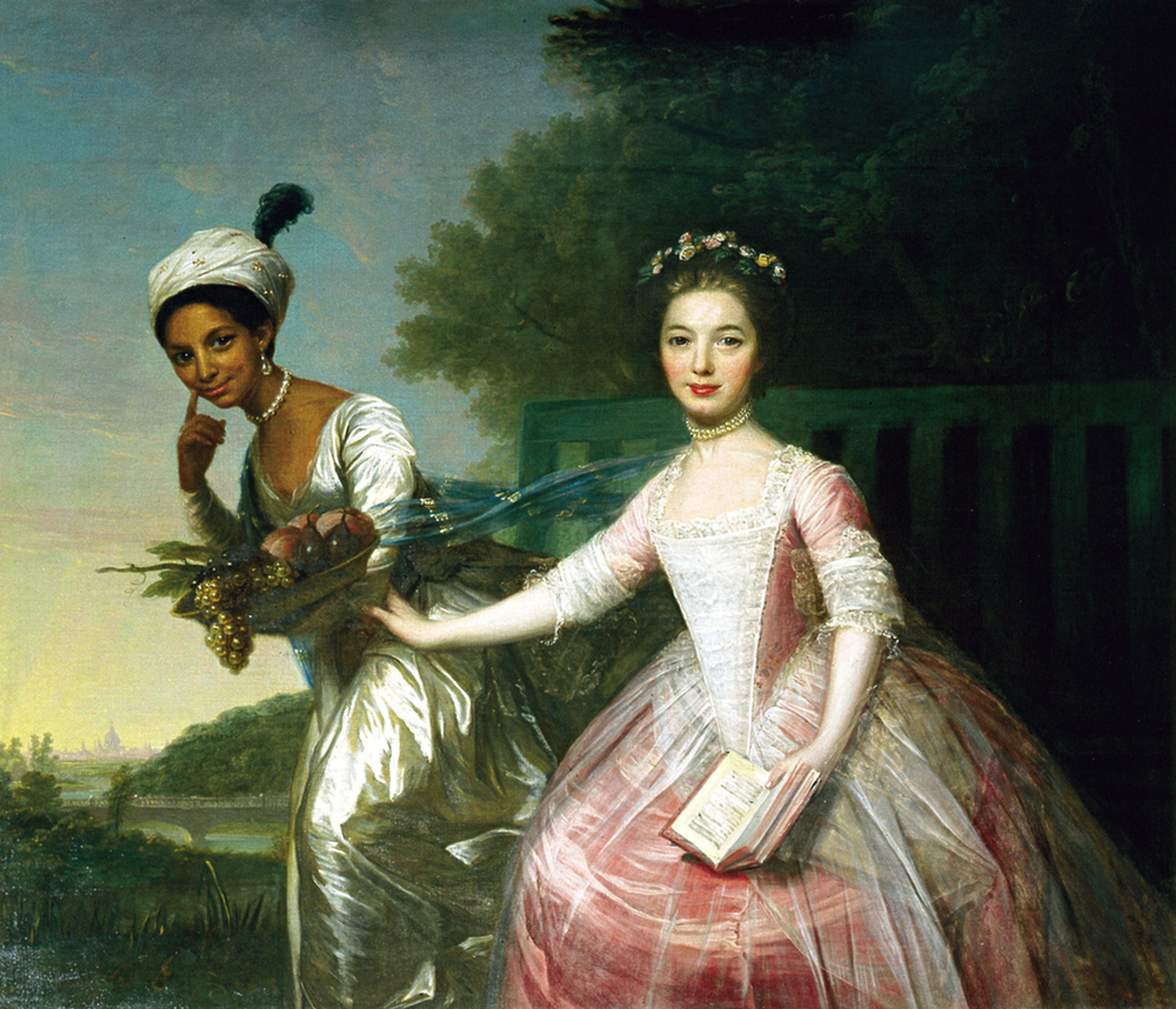
Aboutthe
GeorgianEra
1714 — 1837
As imperialist war raged in the Americas, Caribbean, Australia, and beyond, the jewelry industry benefited: colored gems from all over the empire became newly available. A mix of artistic influences from around Europe contributed to the feminine, glittering jewels of the era. Dense, ornate Baroque motifs from Italy showed up in Georgian jewelry, as did French Rococo’s undulating flora and fauna. Neoclassical style made use of Greek and Roman motifs, which were newly popular due to the recently uncovered ruins of Pompeii and Herculaneum. Lapidary methods improved: the dome-shaped rose cut was popular, as was the “old mine cut,” a very early iteration of today’s round brilliant cut.
The boat-shaped marquise diamond cut was developed around this time, supposedly to imitate the smile of Louis XV’s mistress, the marquise de Pompadour. Paste — an imitation gemstone made from leaded glass — was newly developed in the 18th century, and set into jewelry with the same creativity and care as its more precious counterparts. Real and imitation gems were almost always set in closed-backed settings, lined on the underside with thin sheets of foil to enhance the color of the stone and highlight it's sparkle. This makes Georgian rings tough for modern women to wear, especially on an everyday basis: genteel, jewelry-owning ladies of the 18th century were not famous for working with their hands like we are. Nor did they wash their hands as much as we do. Water will virtually ruin a foiled setting, so take special care with your Georgian ring. Very little jewelry from this period is still in circulation, and it's very difficult to repair.
please note:Terms of Sale
Antiques can be returned unworn and in original condition within 10 days of delivery for an exchange or refund minus the cost of shipping. Once a piece has been altered, including ring re-sizing, it is FINAL SALE.


